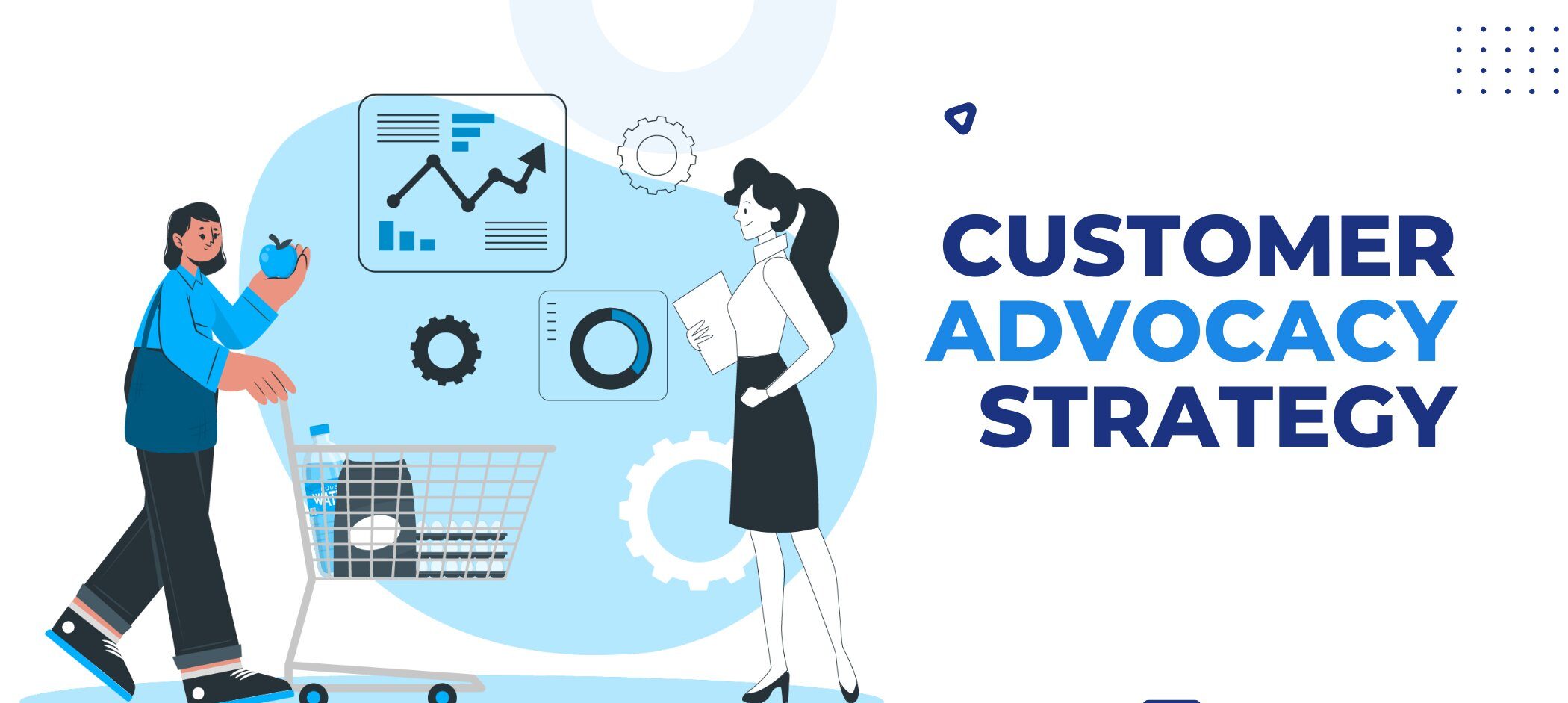Customer-Centric Advocacy Strategies: Driving Growth Through Loyalty
- 1 Defining Customer-Centric Advocacy and Its Significance
- 1.1 How Advocacy Contributes to Sustainable Business Growth
- 1.2 Crafting a Customer-Centric Business Model
- 1.3 Aligning Business Strategies with Customer-Centric Goals
- 1.4 Understanding Customer Lifetime Value
- 1.5 The Economic Impact of Loyal Customers on Business
- 1.6 Customizing Advocacy Strategies for Different Customer Segments
- 1.7 Eliminating Friction Points in the Customer Journey
- 1.8 Co-Creation with Customers: Innovating Based on Feedback
- 1.9 Building a Customer-Centric Workforce
- 1.10 Building a Community of Advocates
- 1.11 Creating Spaces for Customers to Connect and Share Experiences
- 1.12 Social Influence in Building Credibility and Trust
- 1.13 Responsive and Proactive Customer Support
- 1.14 Anticipating Needs: Providing Support Before It’s Requested
- 1.15 Sharing Industry Insights and Expertise with Customers
- 1.16 Identifying Metrics to Gauge Advocacy Success
In an age where brands vie for attention, the timeless adage, “The customer is always right,” evolves into something even more profound: “The customer is at the heart of everything.” Today’s businesses flourish not by the sheer volume of their offerings but by the depth of their commitment to their patrons.
Customer-centric advocacy isn’t just a strategy; it’s an ethos, a pledge to walk alongside customers, championing their interests and enriching their journeys. Dive deep with us as we unravel the multifaceted tapestry of loyalty, exploring the transformative power of genuine, unwavering customer devotion and how it can drive unparalleled growth.
Defining Customer-Centric Advocacy and Its Significance
Customer-centric advocacy is a strategic approach wherein businesses prioritize customers’ needs and interests. The fundamental meaning of customer advocacy platform revolves around ensuring customers feel valued. Its significance is underscored by a shift in business dynamics where empowered consumers now have a louder voice, amplified by technology and social networks.
How Advocacy Contributes to Sustainable Business Growth
Advocacy fosters consumer loyalty, a driving force for repeat business. Building customer loyalty isn’t just about creating types of loyalty programs; it’s about genuine engagement. With loyalty marketing, companies can convert one-time buyers into long-term patrons, ensuring consistent revenue streams.
Crafting a Customer-Centric Business Model
A customer-centric business model is designed with the customer’s journey in mind. Everything should prioritise the customer from the moment they learn about your brand to purchase and post-purchase interactions. This approach often integrates customer advocacy software, tools that help tailor experiences based on user insights.
Aligning Business Strategies with Customer-Centric Goals
Ensuring business strategies align with customer-centric goals means understanding customer advocacy at its core. This alignment ensures that initiatives in marketing, sales, or product development consistently reflect the brand’s dedication to its customers.
Understanding Customer Lifetime Value
In today’s rapidly evolving business landscape, focusing solely on one-time transactions is a myopic view that could cost a company dearly. Understanding Customer Lifetime Value (CLV) opens the aperture through which a business views customer interactions. CLV is the total worth a customer brings to a brand throughout the entire period they remain a customer.
When brands grasp this concept, they can efficiently allocate human and financial resources to nurture these long-term relationships. Implementing customer loyalty programs isn’t just about the initial conversion anymore; it’s about a continual cycle of attracting, engaging, and retaining customers. By maximizing CLV, companies can build strategies that don’t just chase immediate revenue but focus on sustainable growth and customer satisfaction.
The Economic Impact of Loyal Customers on Business
There’s an often-quoted business maxim: “It costs five times more to acquire a new customer than it does to retain an existing one.” The economic implications of this are significant. Loyal customers are akin to brand evangelists. They keep the revenue flowing and take on the mantle of a brand ambassador, providing invaluable word-of-mouth advertising.
This is the epitome of brand loyalty, a powerful form of marketing that money can’t buy. The ripple effect is multifaceted—reduced costs in new customer acquisition, increased repurchase rate, and a more substantial reputation.
In some instances, loyal customers may even be willing to pay a premium, reinforcing the brand’s financial health and making a compelling case for why customer loyalty cannot be ignored.
Customizing Advocacy Strategies for Different Customer Segments
A “one-size-fits-all” approach has limited efficacy in a world that celebrates individuality. Customers’ unique needs, preferences, and expectations require tailored interactions.
This is where customer advocacy software comes into play, offering powerful segmentation capabilities to categorize customers into different groups based on various criteria like purchase history, age, location, or engagement levels.
Using this data-driven approach, businesses can craft hyper-targeted advocacy strategies. For example, one segment might respond better to a points-based loyalty system, while another may find exclusive content more appealing. Through a customized approach, businesses can meet or even exceed expectations, thereby building customer loyalty that is both deep and wide.
Eliminating Friction Points in the Customer Journey
The customer journey can often resemble an obstacle course rife with hurdles that can cause frustration or lead to abandonment. Eliminating these friction points is a cornerstone for building customer loyalty.
Friction can occur at any stage, from website navigation and checkout processes to customer service interactions and product usage. Effective businesses use analytics and customer advocacy software to map the journey, identifying bottlenecks discouraging continued engagement.
Once identified, these issues are resolved swiftly, whether by streamlining a cumbersome process or offering more immediate, responsive support. This focus on creating a seamless experience helps retain existing customers and makes a solid first impression on new customers, facilitating a long-term relationship.
Co-Creation with Customers: Innovating Based on Feedback
In the participative landscape of the digital age, the customer has evolved from a passive consumer to an active collaborator. The concept of co-creation acknowledges this shift, inviting customers to be a part of the innovation process.
Businesses that harness the power of co-creation actively seek and incorporate customer feedback into product development or service improvements. Doing so creates a sense of ownership and investment among customers, which naturally fortifies consumer loyalty. Co-creation turns customers into stakeholder partners whose insights and perspectives contribute to the product’s ultimate success, ensuring that the result is market-ready and market-desired.
Building a Customer-Centric Workforce
In many ways, a company’s workforce is the frontline in the battle for customer loyalty. Whether they’re customer service representatives, sales staff, or even back-end developers, employees play an essential role in shaping the customer experience.
Building a customer-centric workforce, therefore, is not a mere HR initiative but a strategic imperative. Training programs should instil a deep understanding of customer advocacy principles, teaching employees to listen, empathize, and offer solutions that exceed expectations.
Moreover, businesses can employ various tools and frameworks that emphasize customer advocacy, encouraging employees to think from the customer’s perspective. When employees are empowered to act as customer advocates, they become critical drivers of a culture that celebrates and upholds customer centricity.
Building a Community of Advocates
Beyond traditional customer loyalty program tactics, fostering a community where customers can interact, share experiences, and advocate for the brand amplifies loyalty marketing efforts.
Creating Spaces for Customers to Connect and Share Experiences
Such spaces, whether online forums or physical meet-ups, help reinforce brand loyalty. They offer customers a platform to voice opinions, connect with fellow patrons, and deepen their bond with the brand.
Social Influence in Building Credibility and Trust
In today’s digital age, social influence is paramount. Positive online reviews, recommendations, and shares enhance brand credibility. This social proof is integral in building customer loyalty and showcasing the brand’s trustworthiness.
Responsive and Proactive Customer Support
Support isn’t just about reacting to issues. With customer advocacy software, businesses can anticipate problems, provide solutions before escalating, and reinforce customer loyalty.
Anticipating Needs: Providing Support Before It’s Requested
Companies stand out by understanding customer behavior, predicting their needs, and proactively addressing them. This foresight showcases a brand’s dedication, further enhancing customer advocacy.
Sharing Industry Insights and Expertise with Customers
Providing valuable content, industry insights, and expertise positions the brand as a leader and fosters deeper trust and brand loyalty among customers.
Identifying Metrics to Gauge Advocacy Success
Success in advocacy isn’t just about feel-good factors. Tangible metrics, ranging from net promoter scores to customer retention rates, help businesses gauge the impact of their customer-centric strategies.
In conclusion, customer advocacy meaning isn’t just a buzzword. It’s the bedrock on which sustainable business growth is built. As brands navigate the intricacies of loyalty marketing, understanding and valuing the customer remains paramount.

















